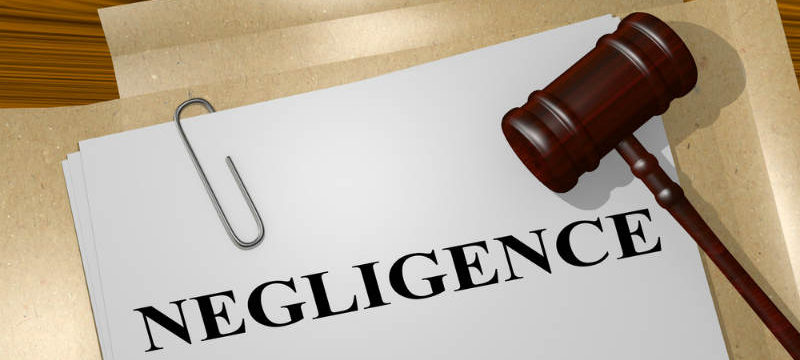The majority of personal injury lawsuits are centered around the argument that another person’s negligence was the cause of an injury. What exactly is negligence, though? Negligence is defined as “the failure to behave with the level of care” that a reasonable person “would have exercised under the same circumstances.” Put another way, negligence is the failure to use reasonable care and which results in harm to another person. Negligence can be based on someone’s actions or failure to act in a certain situation.
Negligence is made up of four distinct elements: duty, breach, causation, and damages. A successful negligence claim requires a plaintiff to prove each element of the offense. According to Los Angeles personal injury lawyer Sherwin Arzani, “Failing to prove one of these four elements will defeat a claim based on negligence.” Let’s take a closer look at the elements of negligence.
Duty
The first element of negligence requires that the defendant has a duty to the plaintiff to exercise reasonable care and/or act in a specific manner. What is reasonable care? Reasonable care is a subjective standard and is calculated by weighing facts and circumstances relevant to a specific case. Factors that should be of primary consideration in determining whether a person’s conduct lacked reasonable care include:
- Reasonable likelihood that conduct will result in harm to another
- Severity of any harm that could result from the conduct
- The burden on the defendant of taking precautions to eliminate or reduce the risk of harm to others.
When does a duty exist? A person may be encumbered with a duty to exercise reasonable care in many situations. Common situations that may impose a duty include the defendant voluntarily assuming responsibility for protecting a plaintiff from harm; the defendant knowing that his or her conduct could reasonably harm plaintiff; or defendant and plaintiff establish a special relationship. Relationships that may trigger a duty include:
- Doctor/patient
- Lawyer/client
- Innkeeper/guest
- Landlord/tenant
- Business owner/customer
Breach
The second element of negligence requires that the defendant breaches his or her duty to the plaintiff. A breach occurs when the defendant acted or failed to act to uphold their duty. A breach is determined by inquiring if a “reasonable person” would have behaved in the same way as the defendant under the same circumstances. A breach occurs when a reasonable person would have acted differently.
Causation
The third element of negligence requires that the plaintiff’s injury (or injuries) were caused by the defendant’s behavior. Causation is separated into two subcategories: actual causation and proximate causation. States have variations and exceptions for determining actual and proximate causation, but the general concept remains the same in each.
What is actual causation? A plaintiff must prove that the defendant’s behavior was the actual cause of his or her injuries. If A was injured in a car accident after B drove through a stop sign and hit her car, A would only need to show that B operated the car that hit her. B’s car hitting A’s car was the actual cause of her injury.
What is proximate causation? is more complicated. Defense attorneys may try to sink a plaintiff’s case by showing that while a defendant’s behavior may have been the actual cause of an accident, it was not the proximate cause. Attorneys use a “but for” test to show proximate causation. A plaintiff must show that “but for” the defendant’s negligence, he or she would not have been injured. The injury to the plaintiff must be a foreseeable risk of the plaintiff’s behavior.
Simply put: the plaintiff’s injury must be a probable and foreseeable risk of the plaintiff’s behavior. For example, if a truck drives into the side of a building, it would be foreseeable that a person inside the building could be injured by the truck or debris. If a window breaks and falls on a person inside the building, it could be said that the truck driver’s negligence was the proximate cause of that person’s injuries. If, after the truck has crashed into the building, a burglar climbs through the wreckage and stabs someone in the building, the driver’s actions will probably not be considered the proximate cause of the subsequent injuries. Being injured by an assailant is not a foreseeable risk of negligently driving a truck into a building.
Damages
The final element of negligence requires that the plaintiff suffer some sort of compensable harm. Simply put, a court must be able to compensate a plaintiff for an injury they sustain. Generally, a physical injury or property damage that caused the plaintiff to suffer monetary losses will satisfy this element.
If you or someone you know has been injured by the negligence of another, contact our Sacramento Personal Injury Lawyers at the Law Offices of Zappettini & Bradley today to learn how we can help you navigate your claim.

